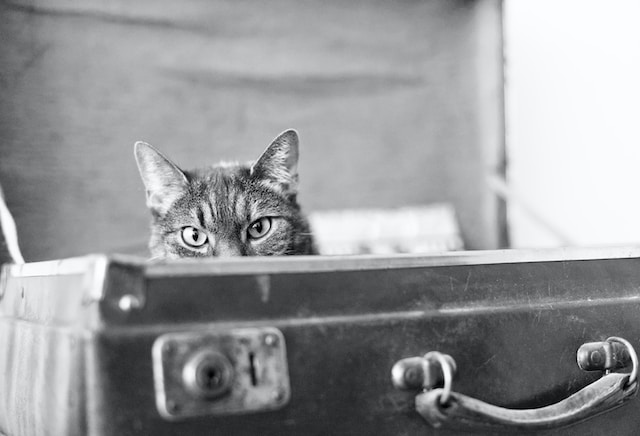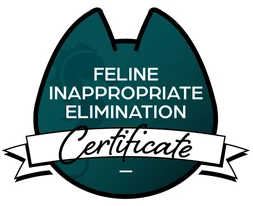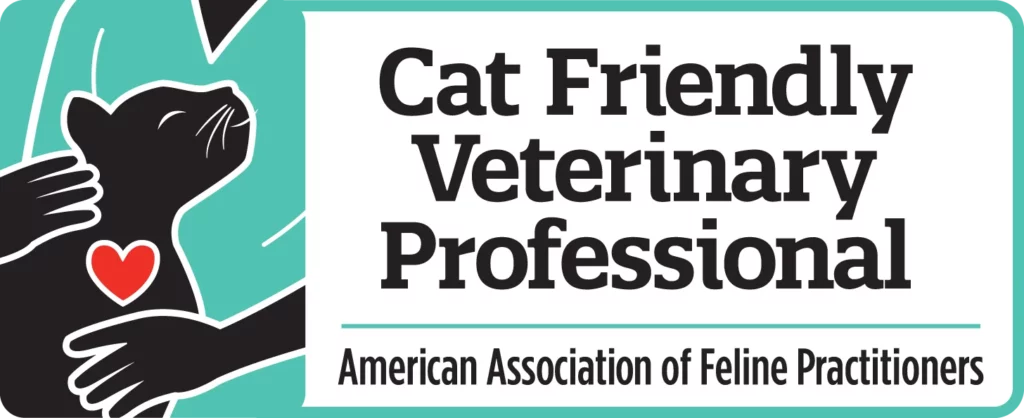The bulk of what I work on clients with is helping them reintroduce cats or address fighting cats. This is a notoriously challenging cat behavior problem to solve and can take months to resolve. There is a lot of bad cat behavior advice available online and there’s a lot of even worse advice on what to do if your cats are fighting.
Many guides on introducing cats don’t dive into what to do if things go wrong or if your cat introduction isn’t working. While I won’t be able to go into full detail because I could easily write an entire book on cat introductions, I’m going to share a few quick tips on things to try if your new cat isn’t getting along with your resident cat. These are a good starting point, but if you need some help I’m available for consultations for personalized advice.
Slow Down
We should probably start with the area where most people go wrong: speed of the introduction. It’s not uncommon for it to take weeks or even months to introduce cats. While some guides on introducing cats will lay out a specific time frame for an introduction (“Separate the cats for exactly a week then move on to the next step”), this rarely will work.
Your goal of the introduction is for the cats to meet each other slowly and develop a positive association with each other. Cats are very territorial so a new cat showing up can cause a lot of stress. It can take a while for them to warm up to each other. In nature, groups of cats will do a sort of natural slow introduction before accepting a new cat into their group so the slow introduction process actually mimics how things would work in the wild.
Go Backward If Needed
If things do go wrong, such as your cat hissing at the other cat or a cat fight occurring, you don’t want to just keep moving forward. While it can be frustrating to take steps backward, sometimes you need to go backward to move forward. Plus, if you keep going your cats’ relationship will worsen and you’ll end up needing to do a reintroduction. These are much more work than taking the time to slow down the initial introduction.
Don’t Feed The Cats Near Each Other
Most guides online seem to emphasize feeling cats near each other in order to build a positive association with each other. Logically, this makes sense because food is good so if the cats eat near each other, they should develop a warm fuzzy feeling toward the new cat.
This is actually pretty bad advice.
Cats are naturally solitary hunters. They don’t catch things that are big enough to share so another cat eating near them could be a threat as they might try to swipe their hard earned meal. Even if your cats get along, it’s still very stressful for cats to eat near each other. Any positive association from the food is going to be canceled out by the stress of the cat feeling the need to defend their dinner.
Misinterpretation Is Easy
Another problem comes from the human side of the equation. Cats need to eat to survive so food is very motivating to cats. Even cats that don’t appear to be food motivated are motivated to eat some of the time or they’d be dead. Your cats may tolerate each other for a meal because the motivation is very high, but not actually like each other. The number of cat introduction problems caused by misinterpreting the cats eating near each other as being a sign of friendship I see is very high.

The same goes for just giving cats treats. If you just toss treats on the floor, you cats may be cool eating the treats. However, they may be upset that the other cat is getting some of their treats. As soon as the treats are gone, a fight could break out. Once again, this strategy is very easy to misinterpret.
Alternative To Feeding The Cats Near Each Other
Instead of feeding the cats near each other, a more natural thing for cats to do with other cats is play with each other so busting out a favorite cat toy can do wonders. For cats that are particularly fearful of each other, this may not be a great choice. If the cats are mildly upset with each other, a mutual play session can be incredibly beneficial.
Actually, play is how I introduced Poutine and Prozac to each other. I got the greatest cat toy of all time, the Cat Dancer, and double fisted two of them with one in each hand. Each cat played with it and they couldn’t care less that the other cat was there because they were having so much fun, but they also learned that the other cat was associated with positive feelings.
Directly Teach The Cats What To Do
One of the other benefits of using play to help introduce cats is it gives them something to do while they are around each other. While you ultimately want the cats to be okay being bored with each other, at first you need them to learn what they can do that isn’t trying to murder each other. With enough time, they’ll begin defaulting to some of these alternative options instead of getting defensive or aggressive.
Make sure your cats always have something to do when they are seeing each other and interacting with each other. In other words, you should never attempt an introduction by just leaving a gate up and letting the cats see each other. That’s not enough to help them learn what to do with each other. You’ll just end up with cats that are stressed, don’t like each other, and more cat introduction problems to solve.
Besides play, you can try petting one of the cats while they are within view of each other, providing a fun enrichment activity for each of them to do, play a pattern game with them (many pattern games from Control Unleashed can be easily adapted for cats so I strongly recommend you pick up a copy), or use clicker training to help directly communicate with the cats about what to do.
Change The Environment
For those of you hoping to avoid having cat furniture in your home, I have some bad news: you have cats. You need cat furniture. It might look like a cat is there because there is a cat there. Since you’re reading a blog post about cat introduction problems, you likely have multiple cats living in your home. You need things for your cats.
Resources are one of the core determining factors of how likely cats are to be able to live in groups so you need to make sure you have enough resources for multiple cats. It’s better to have more of each resource than you have cats and to make sure the resources are spread out. For some resources, especially scratching posts, the location is important to determine how likely your cats are to want to use them. Spreading out the resources in multiple locations helps the cats feel like they always have access to a needed resource.
Let’s Talk Litter Boxes
While your cats may not have litter box use problems, your cat introduction problems may be related to the litter boxes. While it may be tempting to put all the litter boxes in one location, for multicat homes you want multiple litter boxes spread out in different locations. If one cat is blocking a doorway to the room with all the litter boxes, your other cat or cats doesn’t have access to any litter boxes. They may feel the need to defend the litter boxes which could lead to a fight.

In other words, cat introduction problems may be at least partially related to litter box placement even if you have one litter box for each cat plus one extra. It may not be super appealing to have litter boxes outside of your basement, but it’s going to prevent cat introduction problems and keep your cats using the litter box.
Skip The Self Cleaning Boxes
Speaking of litter boxes, many self cleaning litter boxes claim to be great for multicat homes. While they do cut down on scooping, many of them have small entrances so it’s easy for one cat to corner another one in the litter box. You’re better off using a traditional, uncovered litter box and getting a Litter Genie to make it easier to scoop regularly. I have homemade litter boxes made out storage tubs that my dudes use and have no conflict surrounding. This style of litter box is a much better choice if you have multiple cats.
Cat Introduction Problems Can Be Tough To Fix
Cat relationships are complex and cat introduction problems are extremely common. While these tips are a great starting place and might be able to get you back on track, I can’t include every possible solution as every pair of cats is unique. The most important things are to not push the cats too far, slow down if needed, and listen to your cats.
There may come a point where you feel backed into a corner. In some cases, rehoming one cat may be the best solution as not every cat will get along with every other cat. If you don’t want to do that quite yet, check out my reintroduction program or set up a session with me. I love helping repair cat relationships and solving cat introduction problems so I’d be happy to help!










